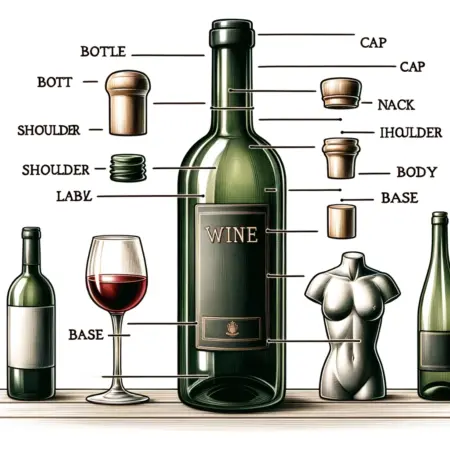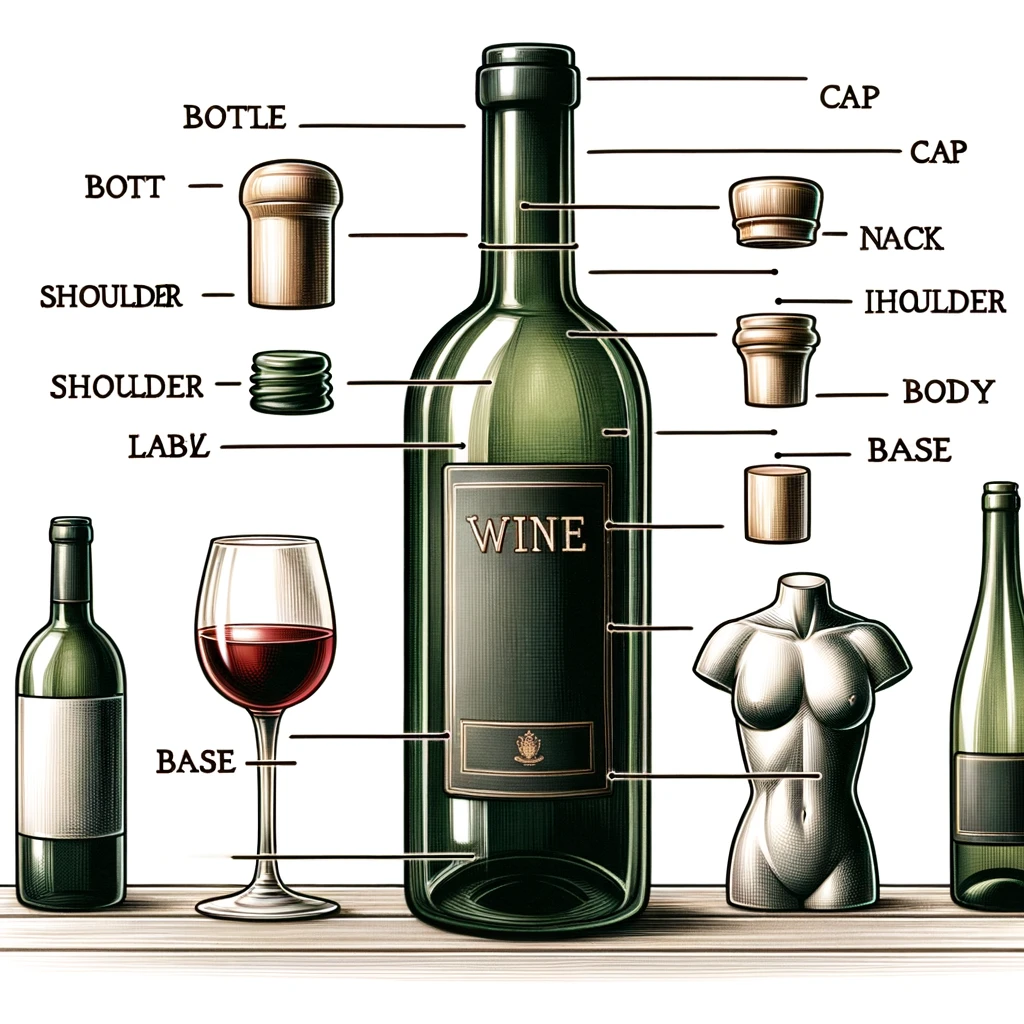The wine bottle is the glass container used to hold the wine. Its main function is to give manufacturing details to customers and companies for marketing and sale.

The vineyards or wineries are the places where the wines are stored or reserved and then go out to the market in the corresponding container. The basic measurement scheme for the wine bottle is 750 milligrams.
For each type of wine there is a design and style of bottles, as well as its colors and the glasses to drink it, however this one still has a similarity, since all wine manufacturers first think about the taste of the wine. Despite the similarities in the bottles, many people manage to identify the type of wine and even its manufacturing house over long distances. Some bottles of wine are made so that the drink inside it ferments.
The wine is produced by the fermentation of the grape juice. The science that studies it is called enology, and the person responsible for this happening is called the winemaker. The wines can be red, white or rosé, sparkling, fortified wines or Champagne. Over the years, wine is not only made with grapes, and many countries have ventured into the manufacture of fruit wines with chinola, mango, cherry and strawberry.
WHAT ARE ITS PARTS?
- 1The Parts of the Bottle are:
- 1Capsule
- 2Stopper or cork
- 3Label
- 4Neck
- 5Head
- 6Heel
- 7Body
- 8Color
The Parts of the Bottle are:
Capsule
The capsule is the hallmark of the winery, vineyard or manufacturing company. This bears the name of the winery and the logo. In addition to helping to protect the cork from insects (bugs, weevils) and moisture.
Also, the capsule shows the consumer that said bottle has not been opened, which is why, when removing the cork, part of the capsule is removed.
Stopper or cork
This part is the one that seals or closes the wine bottle, in addition to the fact that the material from which the cork is made allows the wine to breathe, that is, it can oxygenate slowly. Many wine bottles allow the cork to be repositioned as a closure.
Label
Also called dress. Its name is due to the fact that this paper is the one that covers the body of the bottle. This part contains all the details of the wine or the winery, such as: name, brand, alcohol degree, year of production, among others.
There are different labels, such as:
- Shrinkage: Details are located on the neck of the bottle.
- Back label: It is located on the back of the bottle body.
- Collar: It is located on the shoulder.
- Label: It can be seen in the lower part of the body, a few meters from the circle that forms the bottom.
Neck
The neck is the part that separates the cork from the shoulders and the body of the bottle. The neck is about 4 to 7 centimeters long. Although, some bottles may have a greater or lesser amplitude.
Head
The head of the bottle is where the wine comes from. This is located at the top of the bottle, after removing the cork.
Heel
The heel is what is known as the bottom of the bottle. Its design makes it possible for the bottles to be stopped. The heel or foot of the bottle is surrounded by a thick line like the head.
Body
The body of the bottle is the part where the wine is located. It is the widest part and where most of the labels are located.
Color
The color of the bottle will depend on the winery and the type of wine.
Creating a visual guide for the parts of a wine bottle involves identifying and labeling various components. Here’s a breakdown of the key parts typically found on a wine bottle:
- Bottle Top/Cap: The very top of the bottle, which is sealed with a cap or cork. In the case of sparkling wines, this might include a wire cage.
- Neck: The long, slender part of the bottle just below the cap or cork. It’s where you typically hold the bottle to pour the wine.
- Shoulder: This is where the neck widens out into the body of the bottle. The shape of the shoulder can vary depending on the style of the bottle.
- Label: Often found on the body of the bottle, the label provides information about the wine, such as the winery, vintage, varietal, and region.
- Body: The main, cylindrical portion of the bottle that holds the majority of the wine.
- Base: The bottom of the bottle. Some wine bottles have a dimple or indentation known as a “punt” at the base.
- Punt: The indentation found at the base of many wine bottles. It can affect the way the bottle stands and is handled.
